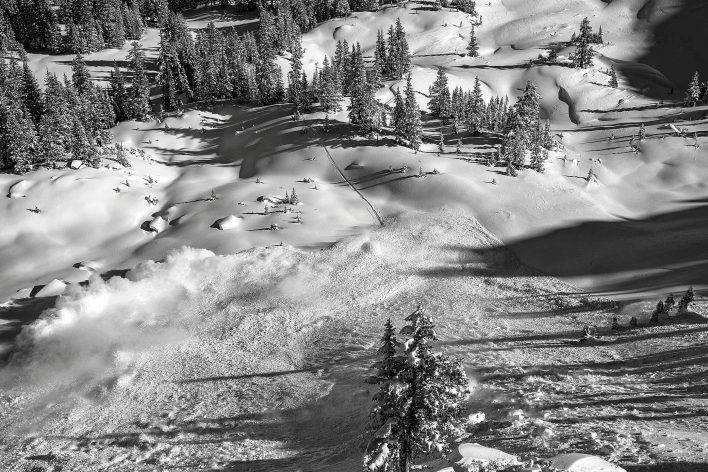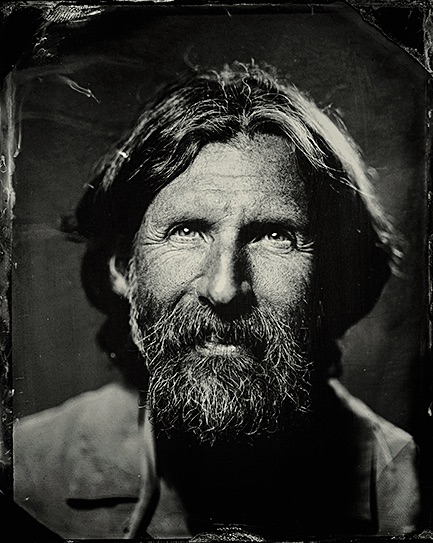
In 2014, the Utah Avalanche Center hosted a blind-focus-group-style meeting to ask a group of male, 20-something-year-old lift-access skiers about their backcountry experience and knowledge around avalanche safety. We led them through different situations, generally staying off to the side to see what sorts of questions or “Aha” moments might arise. Toward the end of the meeting a few participants expressed a need for “some sort of avalanche information office.” We quickly realized it wasn’t the participants who had the “Aha” moment…it was us. And it would probably be more accurate to say it was not an “Aha” moment but an “Oh, my God” moment. We realized we didn’t have an avalanche problem; we had a marketing problem. Cue the Don Draper music.
In the late 1970s and ’80s, avalanche centers recorded their forecasts on a phone hotline. Some of the old Interalia phone-recording consoles couldn’t handle too many people calling while you were recording a new forecast and would lock you out. But that’s a different story. As avalanche centers transitioned to the internet, we took cues from the National Weather Service and wrote similar style Area Forecast Discussions (AFDs) in paragraph form, full of highly technical verbiage and ski patrol jargon. If people wanted to understand the forecast, they either had to have taken an avalanche class or worked in the industry. In essence, they had to come to us to get the information.
For most of our users, it was a little bit like the Wizard of Oz—this omniscient and prescient, booming Godlike voice on the phone line. But when they came down to the avalanche center’s office at the National Weather Service to see where the magic happened, it was as if they pulled back the curtain and found not a midget with a loudspeaker but a cubicle in an office just like the one they had. Where’s the magic?
When I think about that “Oh, my God” realization from 2014, I see it as a watershed moment where we intentionally flipped the script. Instead of having the public come to us, we decided to go to them. And we found them where everyone else is in the world: on their phones.
Our screen-responsive avalanche website had nearly 3.9 million views in the past year alone. Meanwhile, phone hotline numbers have cratered. We also owe a great deal of thanks to Mark Zuckerberg and the social media giants for creating platforms where we can not only build a message but use our followers to be messengers. “Radically exponential” doesn’t begin to describe the curve of @utahavy on Instagram. In 2014, we had 1,600 followers. Today, we have over 75,000.
We also looked into what makes a message “sticky”—or how to make it impactful—and how to build a community. We added photos and videos to forecasts. The faces and voices of our forecasters are right on the website; our users know us, and we know them. We tell stories and host events. This year’s YouTube video accident report on the Wilson Glades avalanche that killed four skiers garnered over 47,000 views. We hosted a livestream debrief of the accident that netted 1,500 live listeners, and we took live questions from the community. Nearly 6,000 viewers have watched the recording. Periodically, we posted informal conversations among forecasters to YouTube, discussing the avalanche danger scale or current avalanche conditions.
The information has become much more of a two-way street: People tag the @utavy Instagram page, and we’re receiving more observations than ever before. Still, we have a long way to go. As Dave Richards of the Alta Avalanche Office likes to say, “Forecasting avalanches is easy. Forecasting people is the hard part.”
Back when I started, my only idea of being an avalanche forecaster revolved around being a snow scientist and a mountain meteorologist. How little did I know that I would have to be a public speaker, marketing expert, community organizer, psychologist and country doctor.

Drew Hardesty is a longtime avalanche forecaster for the Utah Avalanche Center. You can find more of his writing at drewhardesty.com.
This piece was originally published in October 2021 in Issue #141. To read more, pick up your copy at BackcountryMagazine.com/141 or subscribe.










Related posts: